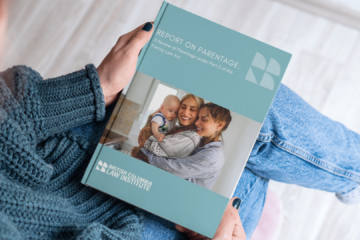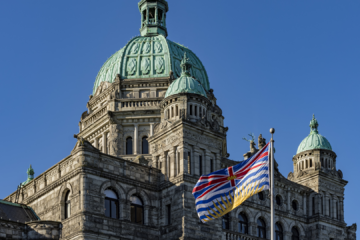BC Creates Temporary Changes to Visitation Rules for Long-Term Care
January 25, 2022
BY Sara Pon
Introduction
On December 31st, 2021, the Provincial Health Officer made a temporary verbal order changing the visitor restrictions for long-term care. The temporary verbal order does not apply to assisted living. The pre-existing Visitor Guidance, effective October 12, 2021, sets out the visitor restrictions in Assisted Living, and these rules will apply to long-term care once the temporary rules are lifted.
This blog will summarize:
- the temporary restrictions that apply to long-term care;
- the essential visitor restrictions, which currently apply to assisted living;
- the social visitors policy; and
- the vaccine policy for long-term care and assisted living.
1. Temporary Visitor Restrictions for Long-Term Care
During the January 4, 2022 press conference, Dr Bonnie Henry announced that visitor restrictions had been changed for long-term care, applicable on Friday December 31, 2021. There was no written health order to accompany this change. It was made as a verbal order and is meant to be temporary.
Currently only essential visitors are allowed in long-term care. The staff at the long-term care facility determine who is considered an essential visitor. Facility events and gatherings are still allowed. See the following sections for details on essential visitors and facility events.
During the January 4 press conference, Dr Henry stated that the essential visitor only rule would be temporary. Shortly, long-term care facilities would be allowing both essential visitors and one designated social visitor per resident. The plan is for social visitors to be allowed once rapid tests are deployed, facilities have a plan to support social visitors, and there is sufficient staff to support these visits. Dr Henry stated that these restrictions are in place in long-term care because long-term care facilities are currently experiencing staffing challenges, given the current state of the pandemic.
Dr Henry and Minister Dix stated that long-term care is a priority area for rapid tests with the goal of enabling more visitors. During the January 18 press conference, they stated that long-term care and assisted living are receiving additional rapid tests to replenish their supplies, but they did not clarify how many tests had been sent. During the press conference question and answer section, they did note that some facilities did not have sufficient rapid tests to facilitate designated social visitors, but that this should be a temporary situation as more rapid tests arrive and are provided to long-term care and assisted living.
In assisted living, regular visitor rules still apply. See the next section for an explanation of the regular visitor rules.
2. Essential Visitors Policy
Essential visitors are always allowed in both long-term care and assisted living. This includes when a facility is experiencing an outbreak. The facility determines whether a person qualifies as an essential visitor. Essential visits can be for several reasons, including:
- For compassionate reasons, such as end-of-life and critical illness;
- When the visit is paramount to the resident’s physical care and mental well-being; and
- For supported decision-making.
Volunteers are now allowed in the facility to provide one of the essential services which an essential visitor can provide.
A resident can only have one essential visitor in the facility at a time. There may be exceptions for when the resident is at the end of life or in palliative care. There is an appeal process if a person is denied essential visitor status.
See our past blog for more details on what circumstances are meant to qualify a person as an essential visitor, how essential visitors are determined, and the process for appealing an essential visitor decision.
3. Pandemic Social Visitor Rules
Under the regular visitor rules, social visits are allowed unless there is an active outbreak at a facility. Facilities may have daily designated social visiting hours. Visits that occur within these times do not have to be booked in advance. Opportunities to visit must be available at times throughout the day and evening, and on both the weekdays and weekends.
The resident and visitor should be given enough time and space for the visit to be meaningful. The individual resident’s needs determine how many visits occur, how long the visits are, and how many people can visit at one time. At a minimum, each resident should have at least one visit per week lasting at least one hour. The number of visitors is also limited by WorkSafe BC safety plans and site capacity.
Visit procedures and requirements include:
- All visitors must be fully vaccinated and show proof;
- All visitors must be screened for any sign if illness, and cannot enter if they are sick;
- Any person who is to self-isolate or quarantine cannot enter;
- Visitors must clean their hands before and after the visit;
- Visitors must wear a mask everywhere, except while in a resident’s room;
- Visits can occur in the resident’s room, unless the room is shared;
- Visitors and residents are allowed to be in physical contact;
- If droplet precautions are in place, visitors must be taught how to put on and take off PPE;
- Surfaces must be cleaned after the visit if the visit occurs in a communal or public area; and
- Social visit processes and guidelines must be posted on the facility’s website, and given to residents and visitors.
4. Vaccine Policy
All visitors to long-term care and assisted living must be vaccinated. This requirement includes both social visitors and essential visitors. Even if a visitor is just travelling trough the facility to get to an outdoor area, they must be vaccinated. To qualify as being vaccinated, the visitor must have at least two doses. Visitors must show proof that they are vaccinated, usually the BC Vaccine Card.
There are limited exceptions to the vaccine requirement. They are:
- Children who are too young to receive a vaccine;
- People with approved medical exemptions; and
- Visits for end-of-life.
5. Other
Leaving the Facility
Under the regular visitor rules, residents are allowed to leave the facility for social reasons, including overnight visits, family visits, or other non-essential activities. The resident will not have to isolate upon returning to the facility. The guidance recommends people interacting with the resident outside the facility be vaccinated, but this is not required.
Events and Gatherings
Facility-wide events and gatherings are allowed to occur under the regular rules. For indoor events, residents and staff from anywhere in the facility are allowed to attend. For outdoor events, staff, residents, and vaccinated visitors are allowed to attend. The events must follow the current Provincial Health Orders, Infection Prevention and Control guidelines, and other applicable guidance, such as rules regarding the number of people allowed at a gathering.
Resources
COVID-19 Policies
- BC Long-Term Care and Assisted Living COVID-19 Policies
- BC Guidance on Visits to Long-Term Care and Assisted Living
- BC Public Health Orders
Patient Care Quality Offices











































